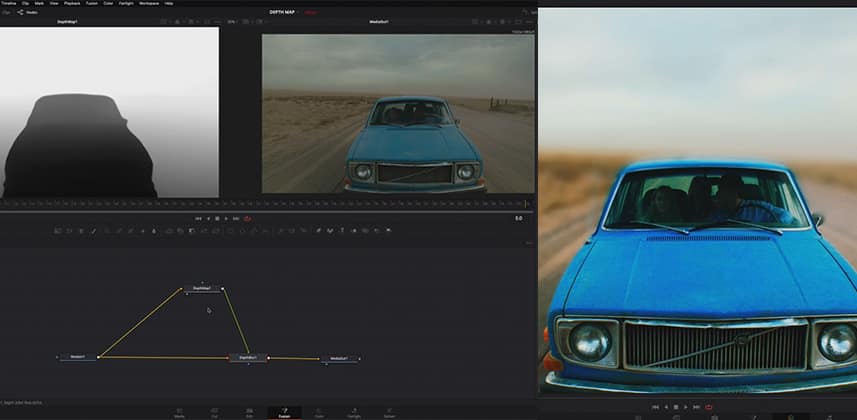A Powerful New ResolveFX Plug-in You Need To Use
The public beta of Resolve 18 was announced just before NAB and is now available for download. Among hundreds of new features – one has stood out to me as a favorite: the Depth Map ResolveFX plug-in. In this Insight, I want to focus on what it is, how it works, and how you can use it in your day-to-day grading.
What Is A ‘Depth Map’?
The Depth Map plug-in generates a grayscale representation of the 3D depth of an image. These depth maps are most commonly seen as a render pass for CG assets, where all the geometry of a scene is known. They are also sometimes called Z-depth passes.
These greyscale maps represent depth via brightness:
- White represents objects closest to the camera.
- Black represents objects the furthest away from the camera.
The resulting image can be used as a matte/alpha channel for color grading, or as an input for various other depth-aware tools.

No Geometry Needed
The new Depth Map plug-in is unique because it generates maps directly from images using a machine learning-based algorithm. This means no additional information is needed. You don’t need camera metadata, 3D geometry, LIDAR scans, parallax from a second camera, or any other traditional way of determining depth. The plug-in works solely on the source image.
Customizability – The Most Important Part
Automatic machine learning-based tools are great time savers – but we all know that an algorithm cannot replace an artist. Depth Map is powerful because once it does its automatic work, you have many options for customizing its output. Controls in the plug-in allow adjustment and refinement for narrow or broad grayscale mattes. DaVinci Resolve’s node-based architecture makes it possible to use any additional traditional tools to refine and adjust the map image.
In This Insight
In this Insight, I’ll walk you through how to use Depth Map and a few different use-case examples. I’ll go over:
- What Depth Map is and what it represents
- Footage concerns for getting a good result
- Using Depth Map as a tool in a fixed node structure
- Isolating foreground and background regions for grading
- Building volumetric effects based on depth
- Using Fusion to simulate depth of field blur
As you can see – I think Depth Map has enormous potential to speed up my workflow. In future Insights, we will dive deeper into advanced use cases with Fusion, but for now – leave me any comments or questions below.
-Joey
Member Content
Sorry... the rest of this content is for members only. You'll need to login or Join Now to continue (we hope you do!).
Need more information about our memberships? Click to learn more.
Membership optionsMember Login


